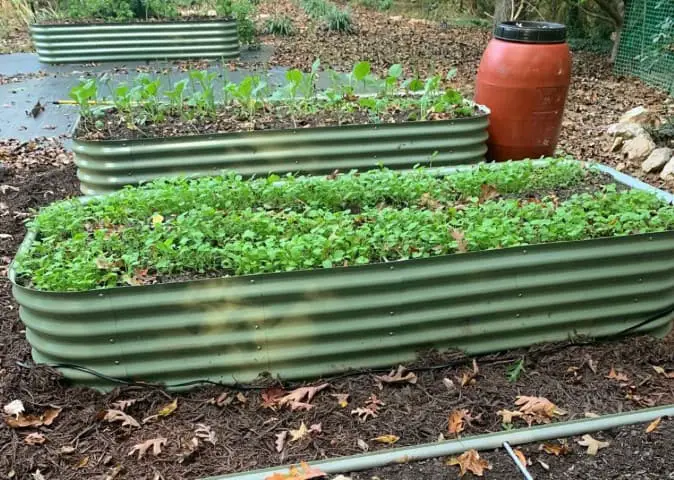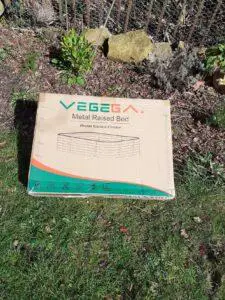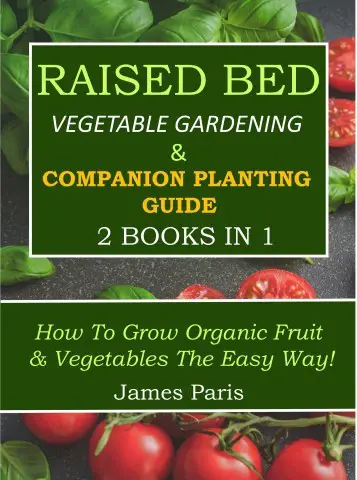When it comes around to the growing season once again, many gardeners consider the use of Raised Beds for growing their vegetables (a good choice!). Often the next question in their minds is whether or not to use wood or metal for their planters – and which is the safer option, if any.
The quick answer to this question is that YES, metal raised beds are safe for growing vegetables, especially if you are concerned about the possibility of contamination leaking from a treated timber structure.
As you may expect however there are a number of things to take into consideration when it come to choosing ‘safe’ material for your garden bed.
- Contaminant leakage from paint or fence treatment.
- Possible Insect infestation.
- Temperature considerations
- Maintenance concerns


All these concerns are elevated when you choose steel Raised Garden beds over treated timber.
Especially in the case of quality corrugated beds that manufacturers like Vegega have to offer, as they are constructed with a zinc-aluminium-magnesium coating over stainless steel. This makes them virtually rot-proof and means a lifetime service of over 20 years.
There is zero problem with potential contaminant leaking from a corrugated metal Raised Bed of the Vegega type.
Will steel beds overheat the vegetables?
This is a common concern, but one that you need not worry about. You may well find that the soil around the edge of the Bed may get warm in the hot sun, but it will soon cool in the first inch or so from the side. Even timber frames will warm up along the edges in the right conditions.
Do metal planters dry out faster than timber?
On the contrary. I have discovered through use that timber beds tend to dry out quicker that metal. Partially because the timber can absorb moisture from the soil. Steel beds do not have this problem and so can last slightly longer between watering.
Unboxing my own Vegega Raised Bed.
This is a round bed that I have recently received from Vegega , and I have to say that from the get-go I am very impressed with it. Not only is it a sturdy metal, but even the fixings are 10mm (3/8th inch) stainless steel which makes them easy to handle without too much fittering about!
, and I have to say that from the get-go I am very impressed with it. Not only is it a sturdy metal, but even the fixings are 10mm (3/8th inch) stainless steel which makes them easy to handle without too much fittering about!
This also means that if I change house and want to take it with me. Or just want to shift the position of the Bed to another location in the next few years, then at least the fixings will not be rusted solid when I go to do it!
These beds are modular in construction and as you can see from the diagrams there are many shapes to choose from. I chose a round Bed for this particular location as it will fit nicely in the corner, giving the lawn a nice curve.
Check out my Vegega unboxing video…
What vegetables will I grow in my planter?
Well to be honest as of writing I’ve not quite made up my mind! However I must do so before I infill it.
Why is this? Simply because most vegetables such as beetroot, are shallow rooted and only require 6-9 inches of topsoil to thrive quite happily. The exception to this is in the case of deep tap-root veggies such as carrots or parsnips for example.
So if I decide to grow deep-rooted veggies then I will fill the whole planter with a mix of good topsoil, compost, and vermiculite – about 1/3rd each. Maybe add in a few shovels of washed sand for free-draining properties.
– about 1/3rd each. Maybe add in a few shovels of washed sand for free-draining properties.
This is the ideal mix for most veggies to ‘guarantee’ a good crop, and create a growing medium that is easy to maintain (weed) with small hand tools rather than heavy digging tools. More on Raised bed infill in this article .
.
Why not fill the Raised Bed just with topsoil?
This is a common mistake that many folks make with Raised Beds (even experienced gardeners). Filling an enclosed area with soil only – especially in the deeper beds – will lead to the soil compacting over time. This means that it is harder to dig and maintain, and also restricts the growth of plant roots as they struggle through the tough soil.
By filling with a mix such as that I suggested earlier. Then the infill will stay loose and friable, making it a joy to maintain and offering your vegetables the best conditions for healthy growth.
Another problem with filling the planter with soil alone, is the fact that in doing so you will inevitably introduce weeds and possibly destructive pests such as cut-worm into your growing area – especially if you have just chosen soil from the bottom of the garden!
So…Are metal raised beds safe for growing vegetables & herbs?
Absolutely! In fact the only reason I can think off NOT to use metal beds would be 1 – the cost, and 2 – you have a ready cheap supply of lumber at hand.
Other than that, as far as I can determine non-corrosive or galvanized steel beds have all the advantages with none of the downsides attached to wooden beds.
Finally: Are metal Raised Garden beds superior to timber?
Well I have in fact gone over this question in some detail in This Article.
But for now, suffice it to say that I believe metal beds of good quality are overall superior to the timber versions. However they do tend to be more expensive (though much longer lasting).
So if you only have a small budget, or have access to cheap lumber to build your own, then more often that not, that is the deciding factor.
Now to get this circular garden bed sorted out…
CHECK OUT VEGEGA RAISED BED CHOICES HERE…


